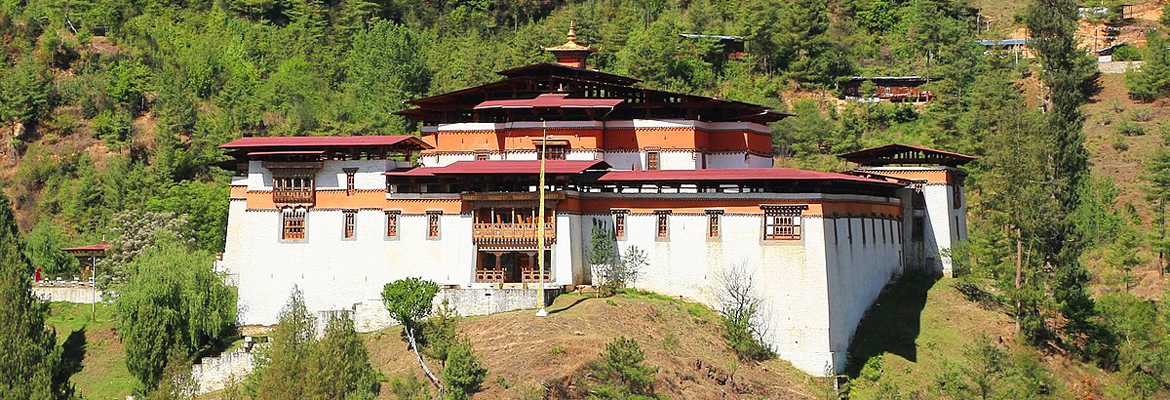
Simtokha Dzong
Paro - Thimphu
Overview
Simtokha Dzong is located on a small hill towards the northern end of Thimphu. Simtokha Dzong is one of the oldest Dzongs in Bhutan. The Dzong was built by Zhabdrung Ngewang Namgyel in 1627, which was 11 years after Zhabdrung’s arrival in Bhutan from Tibet. The most noteworthy artistic feature of this Dzong is the series of over 300 finely worked slate carvings behind the prayer wheels in the courtyard. Several Attacks on the Dzong was made in the past. First attack was made by five disgruntled lamas in collaboration with the Tibetan forces, who were against the usage of Dzong for Buddhist practice under the rule of Zhabdrung Ngewang Namgyal. They were defeated. Later in 1630, the Tibetan forces again attacked the Dzong, and were successful until miraculously the side of Dzong caught fire and collapsing roof killed all the army of enemy. According to the belief, the Dzong provide protection from a demon which has disappeared into rock close to the site. The name of Dzong was derived from this myth “simtokha” meaning “sim – Demoness and Do – Stone) The main relic (nangten) of the Dzong is the statue of the Buddha Shakya Gyalpo (Buddha of Compassion). It is believed that fortunate visitors will be alble to see a light from the chest of this Buddha Statue. The Dzong also hosts a statue of the God of Compassion (Chenrizig). Wall paintings of one thousand image of the beautify its temples. The scriptures of Kanjur (Translation of the words of Buddha) and Bum (Prajnaparamita), which are thought to be unique and special, are among the precious items of the Dzong. These texts were written by the 2 nd Desi, La Ngonpa Tenzin Drugda, in 1656 and fully completed by the 4 th Desi, Tenzin Rabgyal in 1674. There are twenty one carved statues of Tara (Dolma), eight manifestation of Guru (Guru Tshengye), Eight Maha Siddhas (Drupthops or Yogi), and the god of wisdom. The Dzong has only one entry gate from the south while in the past the gate was on the west. Later it was changed, when the road connection was made. The Dzong was built over three floors. The main temple has a large image of the Sakyamuni Buddha, along with images of eight Bodhisattvas on both sides. There are many dark mural paintings within this Lhakhang which are said to be the oldest painting in the Bhutan. The temple to the west of main temple has images of Chenrigzi, green and white tars. There is also a painting of Zhabdrung Ngewang Namgyal, the founder of the Dzong. The third temple is the dedicated to the protective diety of Bhutan, Yeshy Gonpo, which is also known by name Mahakala and Peldon Lhamo. In 1961, during the reign of Third king of Bhutan, the Buddhist School of Linguistics was established in Dzong on recommendation of Queen Mayum Choying Wangmo. In recent decade, the school was shifted to Taktse, in Trongsa. Most of the Bhutanese Buddhist Scholars, Dzongkha language experts were the students of the school. The Dzong also went under several and extensive renovation works. First renovation was completed in 1670 .The renovation work was initiated by the 3 rd Regent of Bhutan, Mingyur Tempa. The most recent renovation was carried out by the architects from Japan. Today, the Dzong is blessing for Bhutanese devotes Zhabdrung Ngewang Namgyel time.
